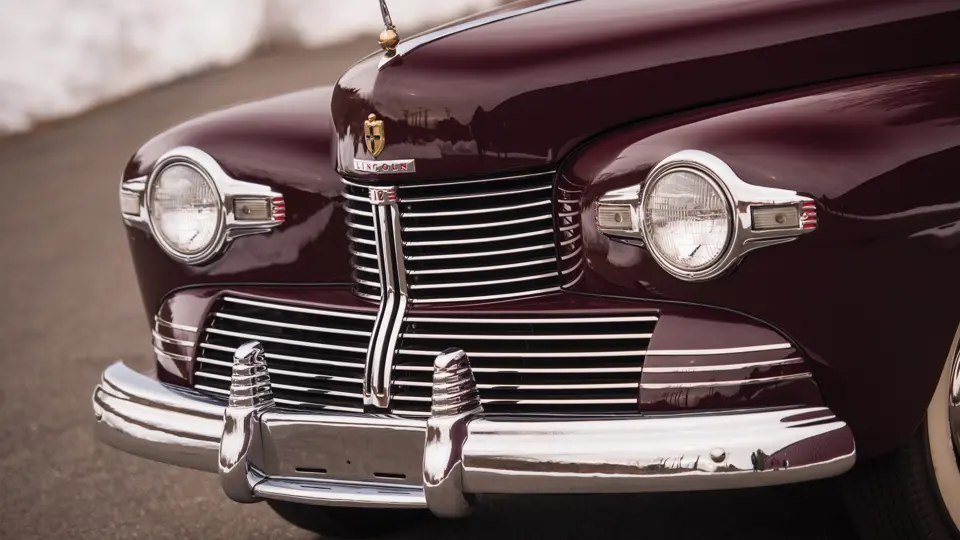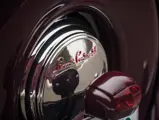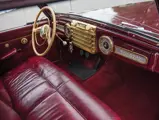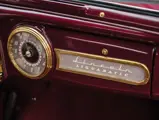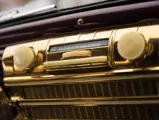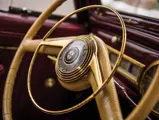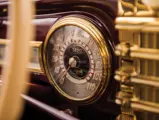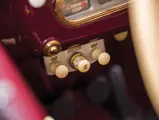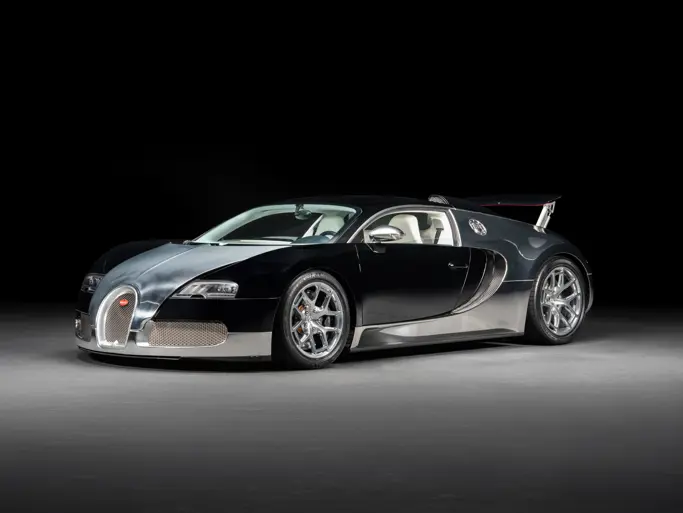
1942 Lincoln Continental Club Coupe
{{lr.item.text}}
$41,440 USD | Sold
Offered from the Dingman Collection
{{bidding.lot.reserveStatusFormatted}}
- Offered from the Dingman Collection
- Originally owned by operatic soprano Grace Moore
- Restored in the 1960s by Lincoln-Zephyr Owners Club founder John MacAdams
- Powered by a Roush-built V-12
If E.T. “Bob” Gregorie gave life to the Lincoln Continental, surely Edsel Ford was its godfather (and the Lincoln-Zephyr its mother). The Zephyr, which had its roots in John Tjaarda’s “Sterkenberg” studies of the late 1920s, became the savior of Lincoln at its 1935 introduction, a time when the big Model Ks were selling barely 2,000 cars a year. A semi-unitary sedan or coupe, the Zephyr used a small V-12, at 267 cu. in., hardly half the size of the K’s engine and, more importantly, sold for a third its price. Lincoln sales promptly rose by a factor of six.
Returning from Europe in 1938, Edsel sketched for Gregorie a concept that he wished to build on a Ford chassis. Gregorie did detailed drawings based on a Zephyr convertible instead, and the result was the Continental. The hood and fenders were extended about a foot, and the car sectioned horizontally by four inches. The bustle back and outside “Continental” tire were the finishing touches. The car was built, and Edsel took it to Florida that winter. Legend says that his friends were so taken with the car that 200 of them placed orders.
This 1942 Lincoln Continental club coupe, one of just 200, was purchased from novelist Lucette Walters of California and Hawaii in April 2017. The build record in the Benson Ford Research Center shows that it was assembled on 24 December 1941 and shipped to Edgewater, New Jersey, across the Hudson from New York City, on 8 January 1942. Its first owner was renowned operatic soprano and musical theater star Grace Moore. She kept the car for several years. On 26 January 1947, she perished in a plane crash in Denmark, at age 48. Some years after her death, the car was purchased by John D. MacAdams, a founder of the Lincoln Zephyr Owners Club.
MacAdams undertook a three-year restoration in the 1960s. It had a couple of owners in the 1970s and ’80s, one of whom was Terry Johnson at the same time he owned the companion cabriolet. Johnson sold it to John Spencer Bradley in 1984; Mr. Bradley lent the car for extended display at the Petersen Automotive Museum in Los Angeles in 1997. It remained there until 2006, when it was sold to Ms. Walters.
Still wearing its MacAdams restoration, it has been carefully preserved and regularly serviced. Upon arriving at the Dingman Collection, it was freshened and detailed by Bayberry Vintage Auto, including the installation of a Roush-built V-12. The build record confirms that the current Victoria Coach Maroon is correct for the car, as is the red leather upholstery. The driver’s seat, however, shows some wear from use. The paint has endured very well and exhibits a deep shine. The build record shows that the Borg-Warner overdrive and radio with vacuum-operated power antenna were factory items. The current hot-air heater was a later addition.
One of the most interesting features is an enigma. The glove box door has an emblem for the Liquamatic transmission. This was an option on 1942 Lincolns and Mercurys, somewhat like Chrysler’s Vacamatic Fluid Drive. Units had immediate problems, and all were apparently replaced. This car’s build record, however, does not note the Liquamatic option; in fact it was shipped before the first Liquamatic cars were built. John MacAdams reports that the emblem was on the car when he got it, apparently a memento of what might have been.




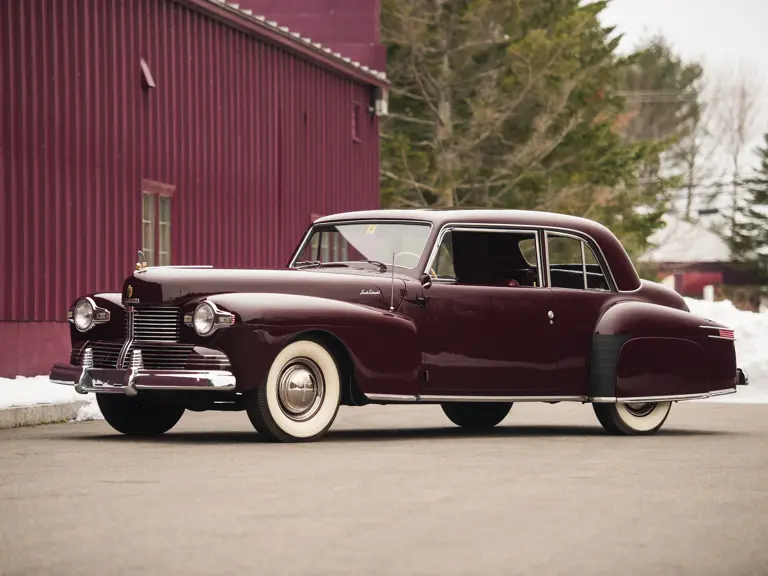
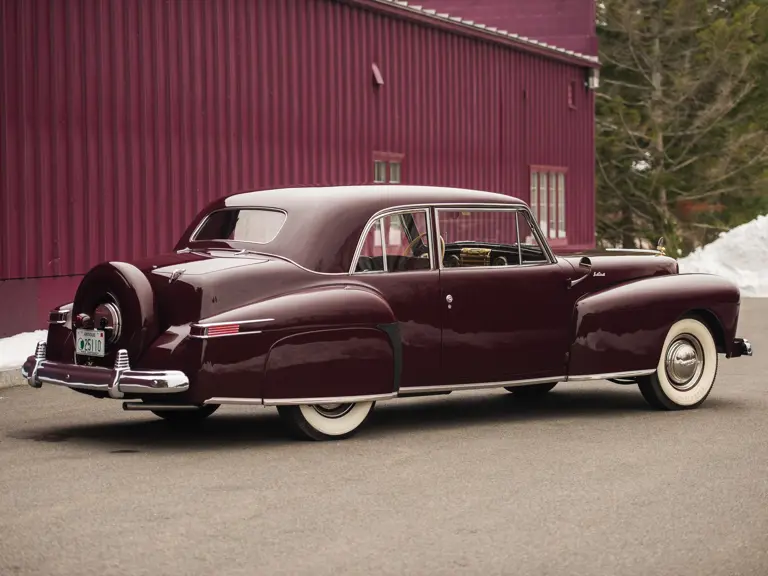
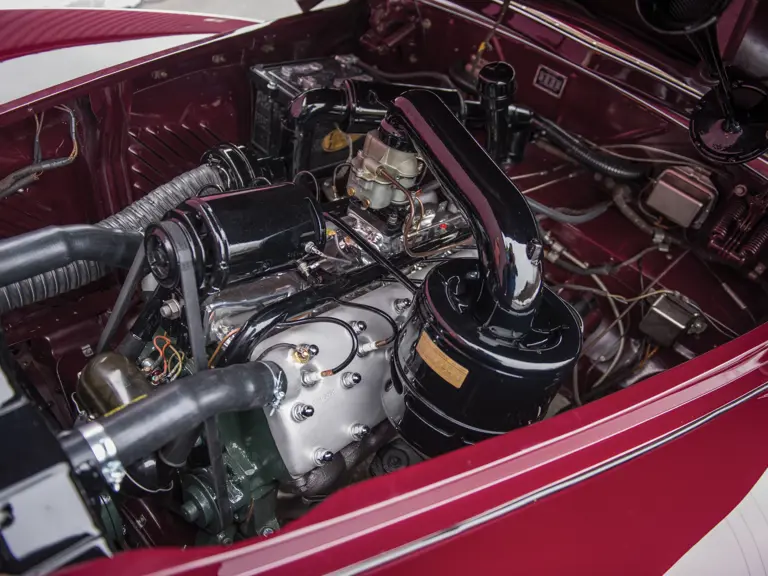
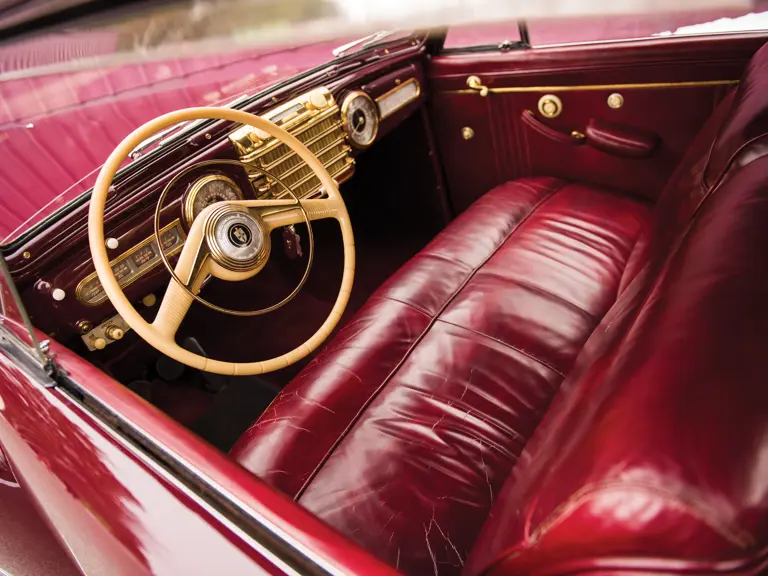



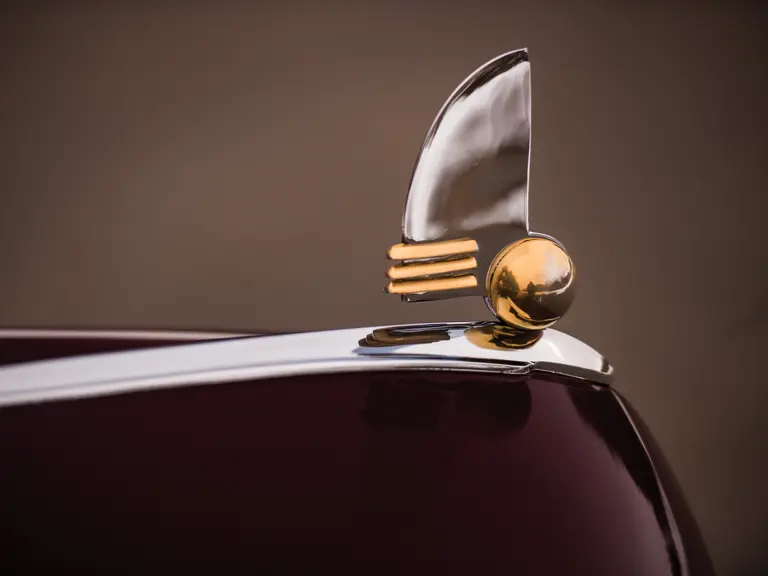

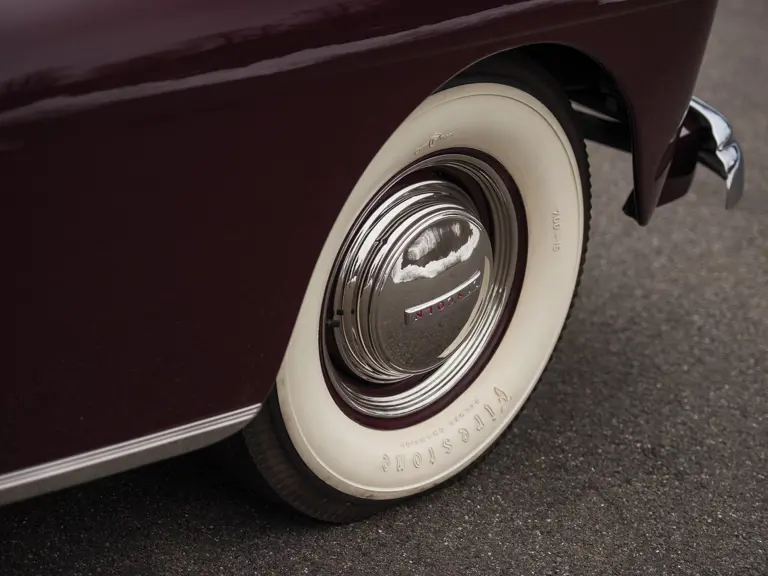
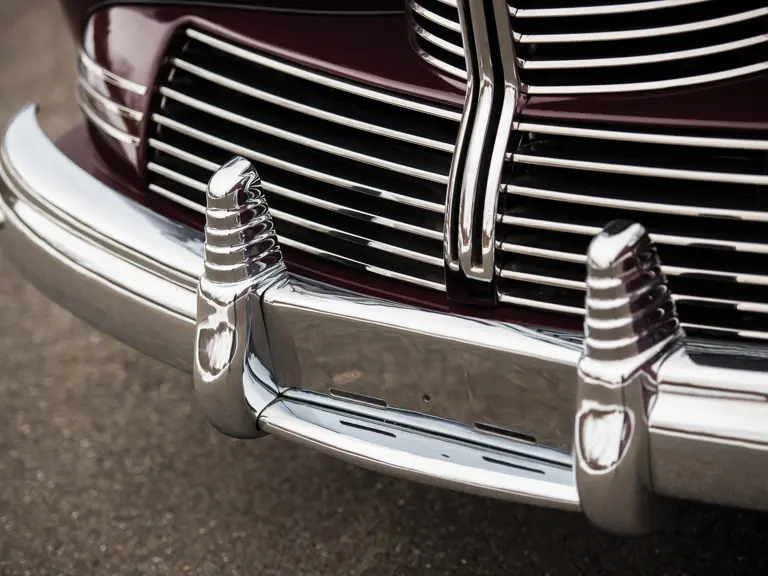
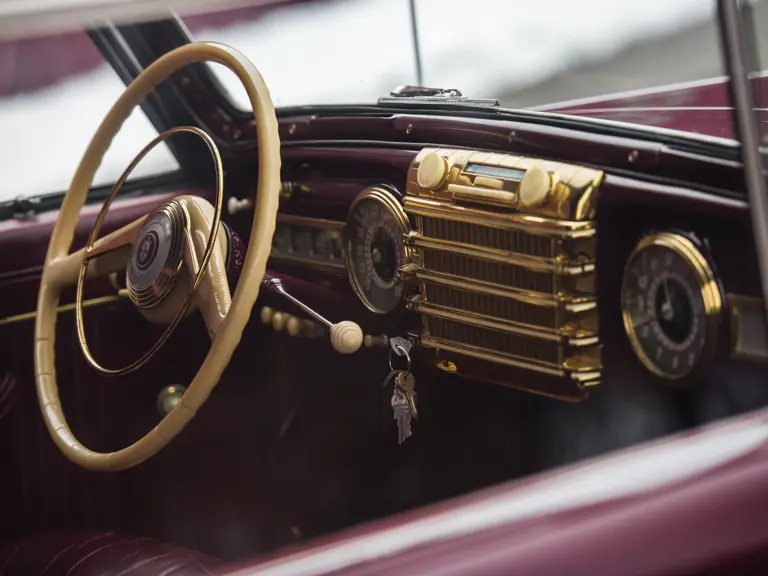
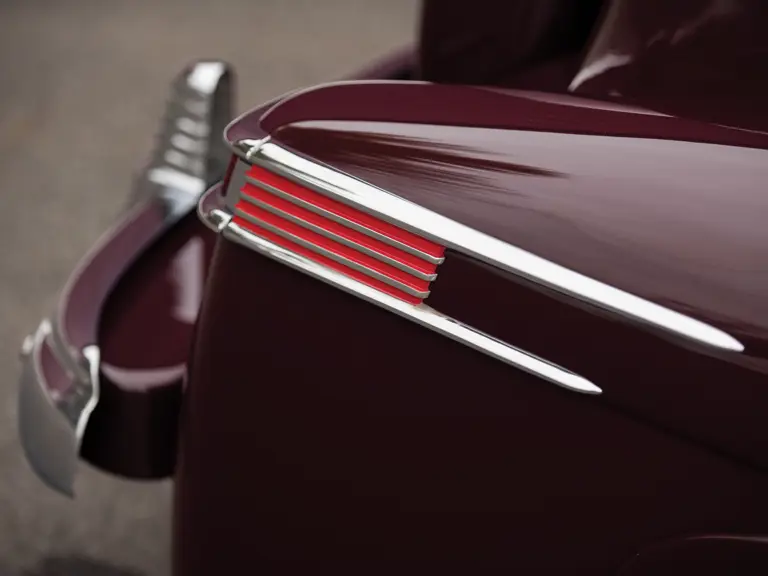
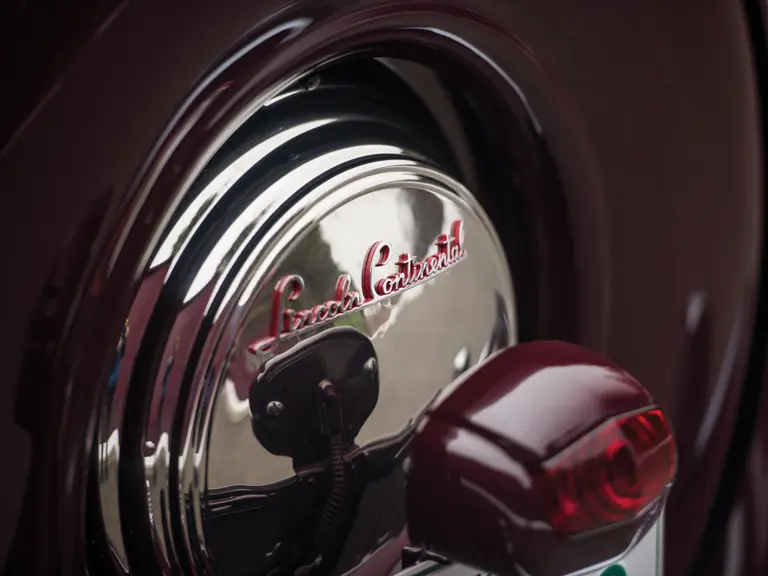

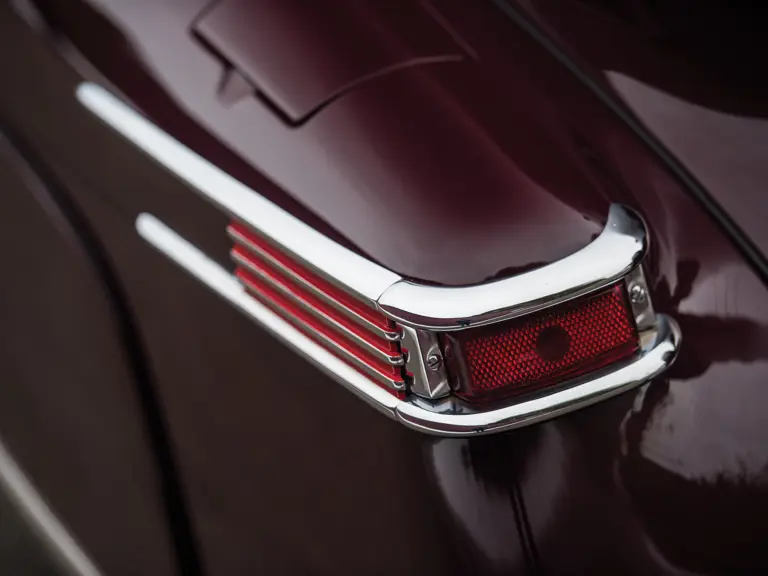
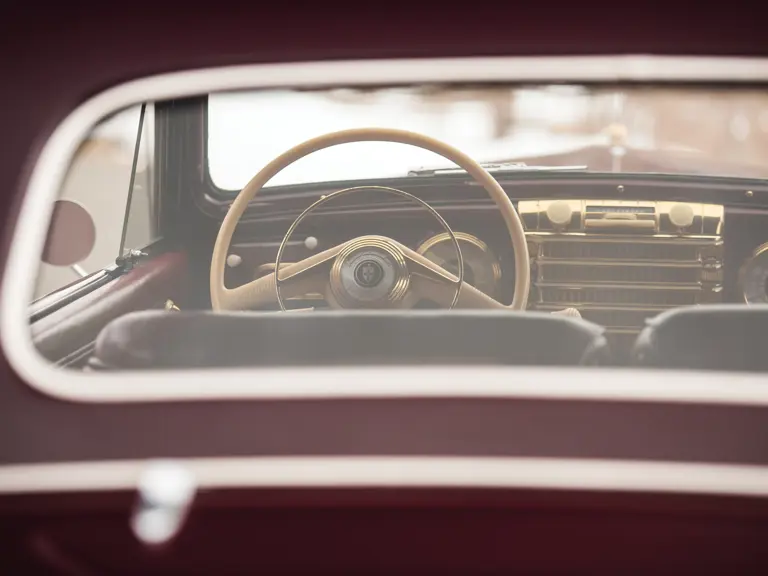


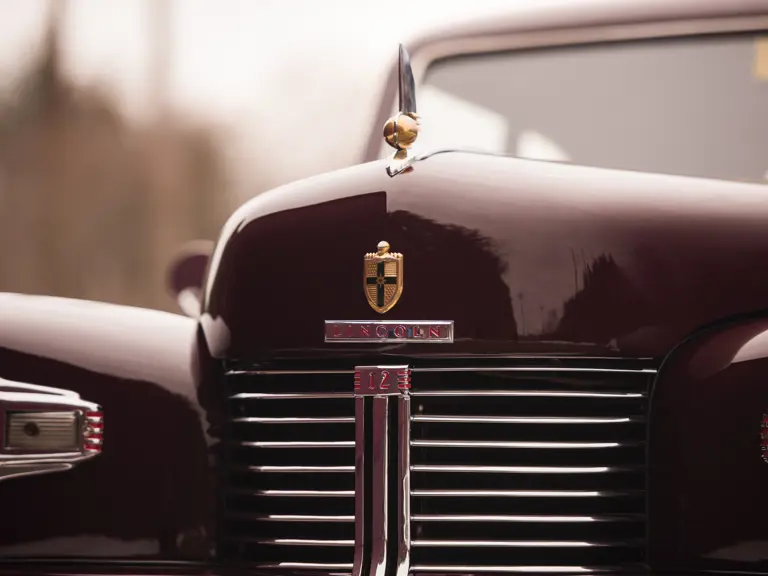
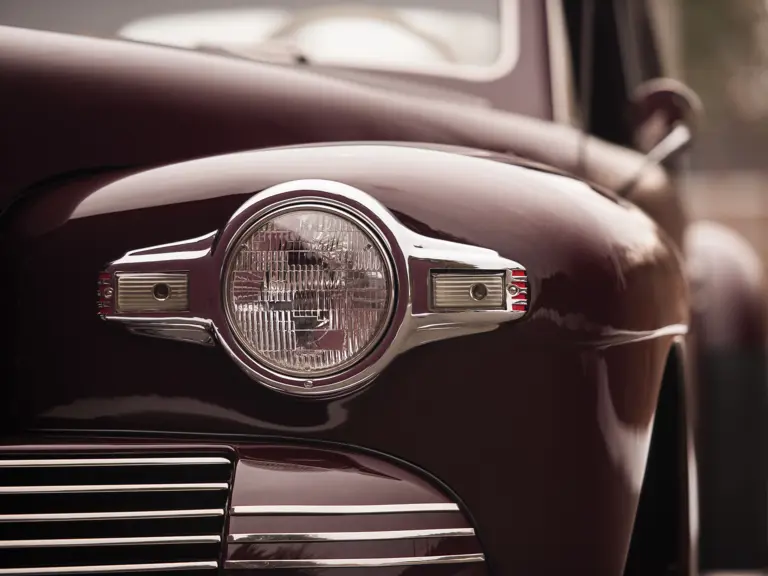


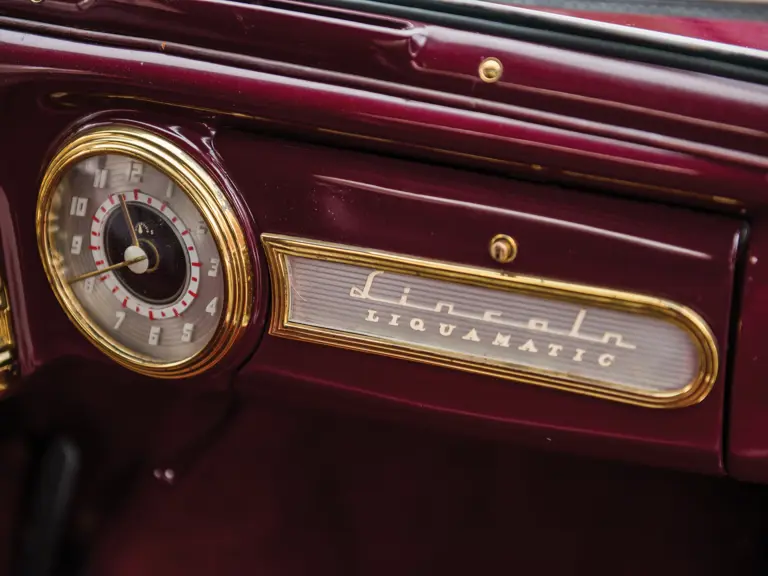


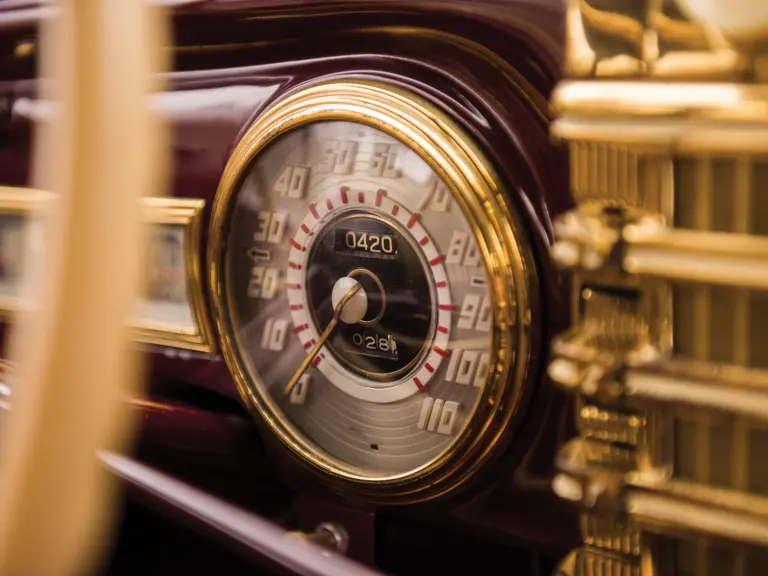
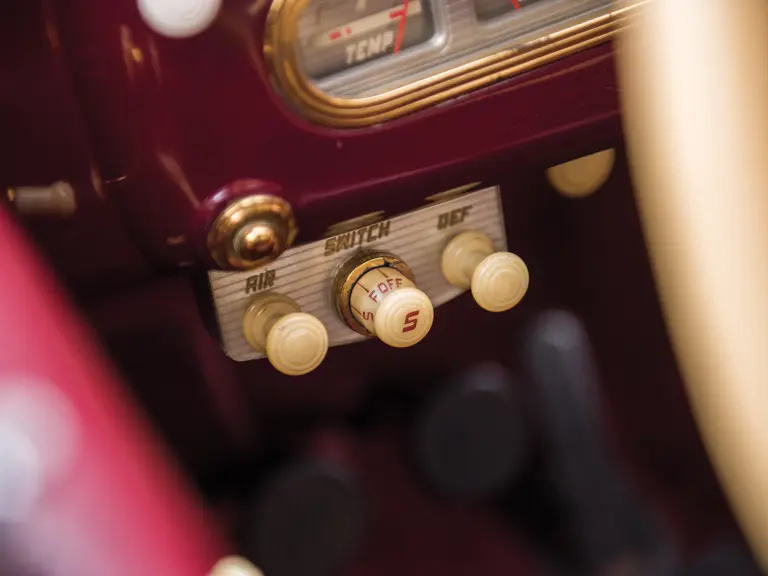

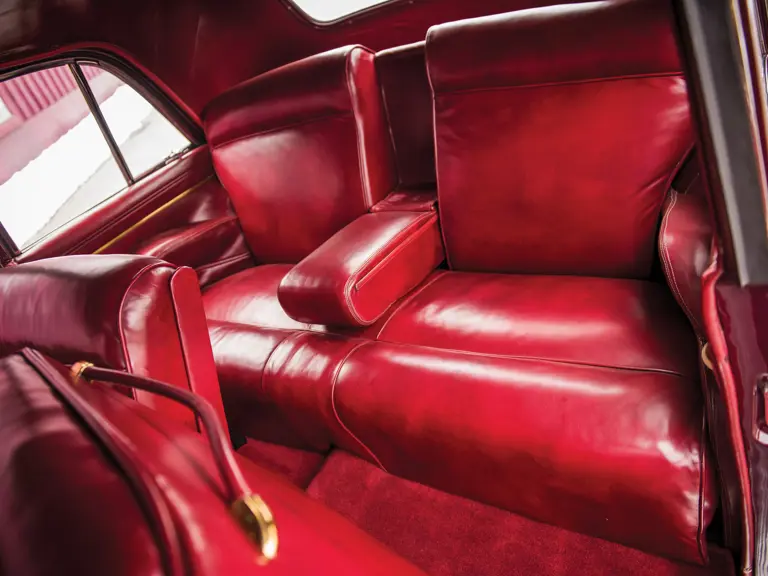
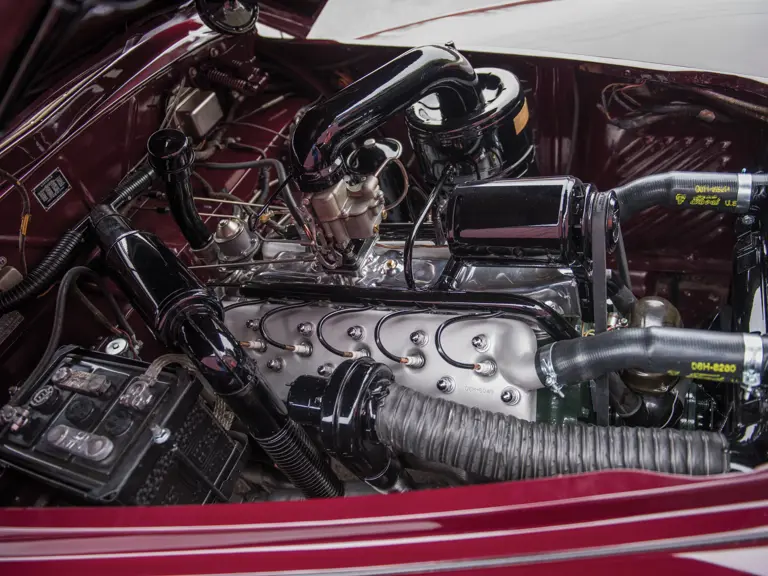
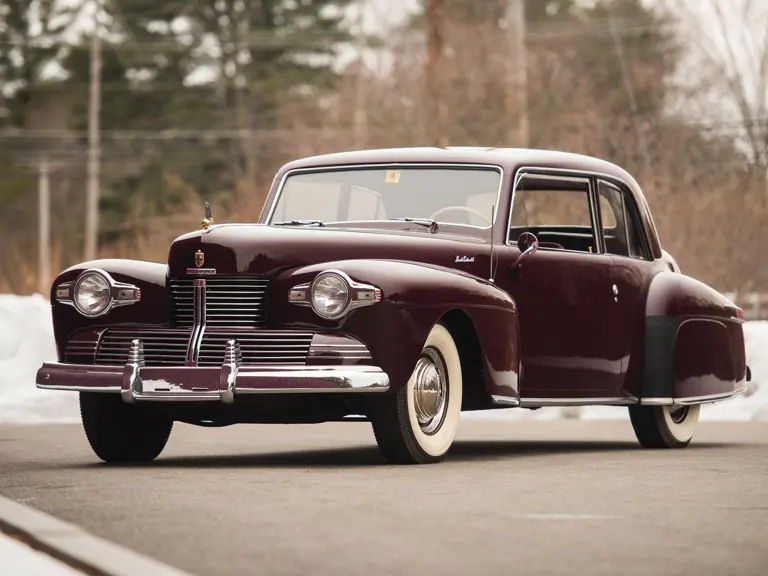
 | Hampton, New Hampshire
| Hampton, New Hampshire
